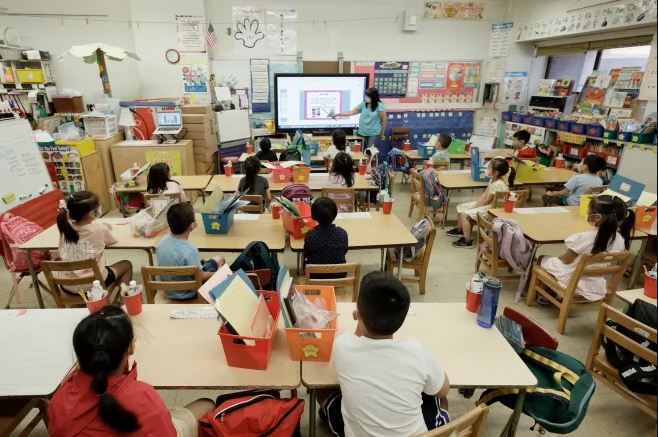Youth groups, advocates demand NYC funds program to connect immigrant families with schools.

NY Daily News | “Reaching immigrant families requires more than just translation and interpretation,” read the memo from Advocates for Children of New York, The Legal Aid Society, New York Immigration Coalition and other groups.
While public school families speak more than 150 languages, according to the advocates, the Department of Education only posts communications online in the nine most spoken languages.
Through the program, which launched three years ago, education officials partner with local organizations and ethnic media to share school-related updates to parents who otherwise may have been shut out of their children’s education.
It also reaches families via text, call and hard-copy letters, helps schools purchase equipment for interpreters, and funds campaigns in churches, supermarkets and hair salons to make sure parents know their rights, such as to ask for an interpreter at their child’s school.
“With the recent increase in the number of newly arrived immigrant families in New York City, a multi-faceted approach to immigrant family communication is needed now more than ever,” the letter continued.
An estimated 38,000 migrant children have enrolled in the city’s public schools since the influx began, including 20,000 just this school year, according to DOE data.
It’s an investment that parent Sandy Mite Torres could benefit from as she tries to find the right schools for her three children after they fled death threats in Ecuador.
Mite Torres was placed at a migrant tent camp on a remote Brooklyn former airfield, before moving to a hotel-turned-shelter in Midtown Manhattan. Two of her kids transferred to closer schools, but she commutes six hours each day to drop off and pick up her autistic, five-year-old son at P.S. 115 in Canarsie.
“When there are crises, I need to know what’s happened,” Mite Torres said through a translator. “But the problem is that the school, nobody speaks Spanish there, nobody can understand him. And then they cannot explain to me what has happened. I use my translator on my phone to try to communicate, but that is not enough.”
Mite Torres said she has not been offered an interpreter and is still trying to transfer her son to a closer school that can accommodate his disability.